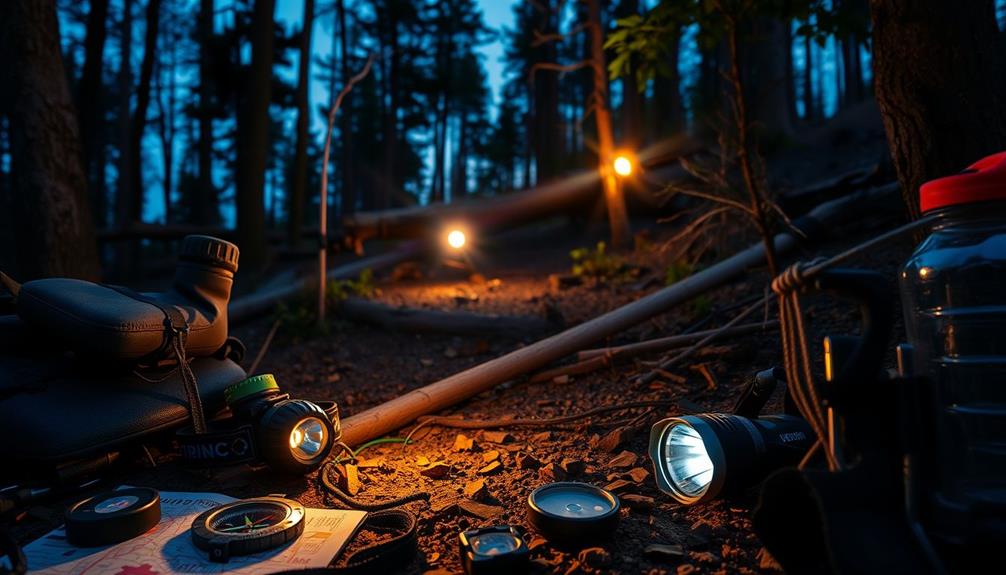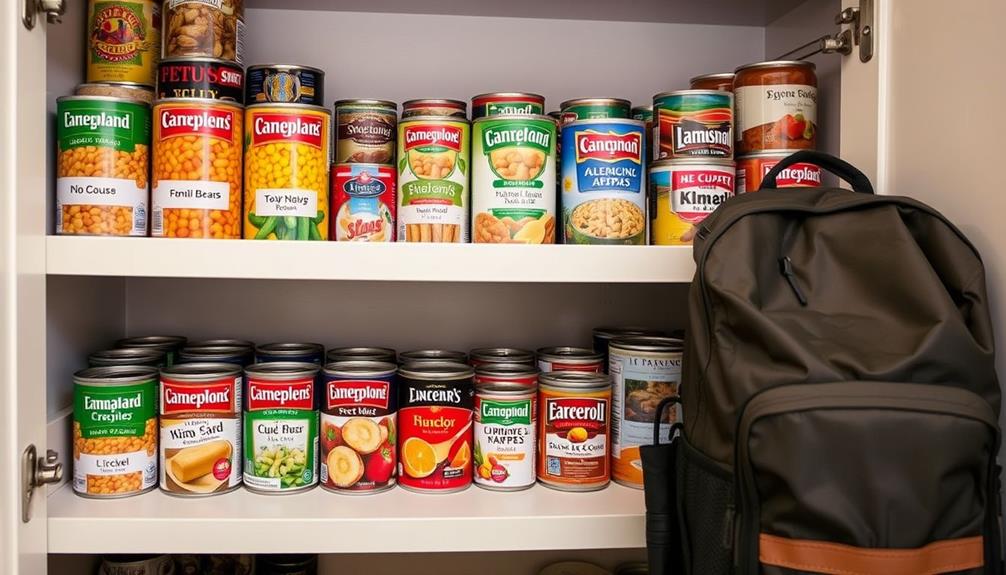You've likely heard the stereotypes: preppers are paranoid, isolated, and obsessed with doomsday scenarios. But what if these myths are just misconceptions? In reality, preppers prioritize preparedness for emergencies, motivated by self-sufficiency and resilience, not fear. They stockpile supplies with a purpose, engage in community activities, and focus on practicality and peace of mind. Preppers prepare for everyday emergencies, not just doomsday scenarios, and recognize the importance of community and adaptability. By shifting the focus from fear to action, preparedness becomes empowerment, not fearmongering. Want to learn more about the reality of prepping?
Key Takeaways
- Preppers prioritize preparedness for emergencies, motivated by self-sufficiency and resilience, not fear or irrational beliefs.
- Stockpiling for emergencies involves careful planning and organization, unlike hoarding, which lacks purpose and leads to clutter.
- Preppers value community and collaboration, engaging in group activities and skill-sharing events to enhance resilience.
- Preparedness involves dynamic planning and adaptability, extending beyond doomsday scenarios to everyday emergencies and challenges.
- Preparedness empowers individuals, providing a sense of peace of mind and proactive readiness, rather than promoting fear or anxiety.
The Paranoid Delusion
When you think of preppers, the image of a paranoid individual consumed by doomsday scenarios might come to mind, but this stereotype couldn't be further from the truth. The notion that preppers are driven by paranoia is a persistent myth that needs to be debunked. In reality, preppers are practical individuals who prioritize preparedness for various emergencies. They're not motivated by fear or irrational beliefs, but rather by a desire to be self-sufficient and resilient in the face of uncertainties.
The paranoid delusion surrounding prepping is a result of misconceptions and misinformation. Preppers are often portrayed as extreme and irrational in popular media, reinforcing these negative stereotypes. However, the reality is that prepping is about sensible planning and preparation, not about extreme behaviors or irrational fears. By understanding the true motivations behind prepping, you can see that it's not about being paranoid, but about being proactive and responsible.
Myths about prepping need to be dispelled, and the facts need to be presented in a clear and concise manner.
Hoarding Versus Stockpiling

One common misconception about preppers is that they're hoarders, but the reality is that they're strategic stockpilers, carefully accumulating essential items for emergency situations. Hoarding implies collecting without a purpose, whereas stockpiling involves thoughtful planning and organization.
You might wonder what the difference is, and it's important to understand that preppers don't accumulate items randomly.
Here are a few key differences between hoarding and stockpiling:
- Purpose: Hoarding is about collecting without a purpose, while stockpiling is about preparing for emergencies.
- Organization: Hoarding often involves clutter and disorganization, whereas stockpiling involves careful planning and rotation of supplies.
- Usage: Hoarding typically means holding onto items without using them, whereas stockpiling involves using what's stored and replenishing items to maintain readiness.
Stockpiling is a practical prepping practice that helps you be prepared for a range of potential crises. By understanding the difference between hoarding and stockpiling, you can appreciate the thoughtful approach preppers take to maintain self-sufficiency during disruptions.
Extreme Isolationism Debunked

You might assume that preppers are extreme isolationists, but the reality is that they're often highly connected and collaborative, recognizing that community is an essential component of survival.
In fact, preppers value community and building networks for mutual support, which is important for overcoming challenges during a crisis. They frequently engage in group activities, skill-sharing events, and community preparedness initiatives to enhance community resilience.
Contrary to the myth of extreme isolationism, preppers understand that working together is key to survival. They believe that building strong community ties and fostering relationships are critical aspects of prepping.
By collaborating with neighbors and local organizations, preppers can share resources, expertise, and support, making their communities more resilient in the face of disaster.
Preppers Are Not Doomsdayers

Reality often differs from popular portrayals, and the assumption that preppers are doomsdayers is a myth that deserves correction. As you explore the world of prepping, you'll find that it's not just about preparing for the end of the world. In fact, preppers prioritize practicality and peace of mind by having plans in place for various scenarios, not just catastrophic events.
You'll find that preppers prepare for everyday emergencies like power outages and natural disasters, showcasing their adaptability and mental preparedness.
They emphasize being ready for personal calamities and unexpected situations, demonstrating their focus on self-reliance.
Prepping extends beyond doomsday scenarios to include preparedness for a wide range of challenges individuals may face, from job loss to medical emergencies.
The Reality of Self-Sufficiency

TEXT:
Cats are known for their independent nature. They are often seen as aloof and mysterious animals. Despite this reputation, many cats are affectionate and enjoy human companionship. They form strong bonds with their owners and can be very loyal pets.
Dogs, on the other hand, are known for their loyal and friendly nature. They are often referred to as "man's best friend" because of their devotion to their owners. Dogs are social animals that thrive on human interaction and companionship. They are known for their playful and energetic personalities. Many people enjoy having dogs as pets because of their loving and faithful nature.
Community Building in Action

As you explore the world of preppers, you'll find that community building is a crucial aspect of their preparedness efforts.
By forming strong bonds and mutual support systems, preppers create a network of like-minded individuals who can rely on each other in times of need.
From neighborhood watch programs to skill-sharing initiatives, preppers are actively working together to build resilient communities.
Building Strong Bonds
By joining forces with like-minded individuals, preppers create a powerful support network that amplifies their collective preparedness and response to emergencies. This community building is an essential aspect of responsible preparedness, debunking the myth of isolation and paranoia.
By building strong bonds with neighbors and like-minded individuals, preppers can:
- Share resources, knowledge, and skills to enhance collective preparedness
- Collaborate with local organizations to create a network of mutual support during crises
- Pool resources, plan effectively, and respond efficiently to emergencies
Through community building, preppers demonstrate that preparedness isn't about being alone, but about being part of a strong, supportive network. By working together, preppers can accomplish more than they could alone, and create a safer, more resilient community.
Mutual Support Systems
You're part of a vibrant network where preppers pool their resources, skills, and knowledge to create a robust mutual support system, empowering each other to respond effectively in times of crisis.
This community building effort fosters resilience and strengthens bonds, creating a network of like-minded individuals who can rely on each other for mutual aid.
When disaster strikes, preppers don't go it alone; they collaborate with neighbors, local organizations, and fellow preppers to enhance preparedness efforts and response capabilities.
Neighborhood Watch Programs
Taking community building to the next level, Neighborhood Watch Programs bring residents together to proactively prevent crime and enhance safety, fostering a sense of unity and cooperation that extends far beyond crisis preparedness. These community-based initiatives empower neighbors to look out for each other, report suspicious activities, and collaborate with local law enforcement to create a safer environment.
By participating in Neighborhood Watch Programs, you'll not only contribute to a more secure community but also:
- Receive training on crime prevention techniques, emergency preparedness, and effective collaboration
- Build trust and communication with your neighbors, promoting a sense of unity and cooperation
- Be part of a proactive approach to preventing crime, rather than just reacting to it
These programs have been shown to reduce crime rates, increase community cohesion, and improve overall neighborhood safety. By working together, you can create a more secure and supportive community that benefits everyone.
The Adaptability Advantage

Your preparedness plan becomes a dynamic toolbox, equipping you to tackle everything from personal crises to natural disasters and everyday emergencies, thanks to the adaptability advantage of prepping. This advantage showcases preppers' ability to think on their feet and respond to changing situations quickly.
By prioritizing adaptability, you can guarantee readiness in diverse environments and tailor your preparedness efforts to your specific needs and concerns.
Prepping isn't just about stockpiling supplies; it's about developing mental preparedness and the ability to handle various challenges. Preppers demonstrate adaptability by preparing for a wide range of scenarios beyond doomsday scenarios. This versatility allows you to respond effectively to personal calamities, natural disasters, and everyday emergencies.
By being adaptable, you can adjust your plan as needed, making it a valuable asset in any situation.
In essence, the adaptability advantage of prepping enables you to stay one step ahead of unexpected events. By embracing this advantage, you can create a preparedness plan that's dynamic, flexible, and effective in the face of uncertainty.
Preparedness Is Not Fearmongering

By prioritizing preparedness, individuals can shift their focus from fear to action, cultivating a proactive approach that emphasizes readiness over anxiety. This mindset isn't about fueling paranoia, but about taking responsibility for one's safety and well-being.
When you start preparing, you'll realize it's not about worst-case scenarios, but about being practical and responsible. You'll focus on developing skills, stockpiling essentials, and having a plan in place. This approach provides a sense of empowerment and peace of mind, rather than perpetuating fear.
Here are a few ways to get started:
- Start small: Begin with simple steps, like creating an emergency fund or stockpiling non-perishable food items.
- Plan ahead: Think about potential emergencies and develop a plan to address them.
- Focus on skills: Develop practical skills, such as first aid or basic repair work, to increase your self-sufficiency.
Frequently Asked Questions
Can Prepping Be Done on a Limited Budget?
You can prep on a limited budget by prioritizing essential items, shopping smart, and DIY-ing when possible. Start with small, affordable steps, like stockpiling non-perishables and creating a emergency fund.
How Do Preppers Balance Preparedness With Daily Life?
"You think preppers are obsessed crazy people, but honestly, they're just like you, trying to adult. They balance preparedness with daily life by prioritizing, making smart purchases, and incorporating prep into their daily routine, sans tin foil hat."
Are Preppers Only Preparing for Extreme Disasters?
You might think preppers only prep for extreme disasters, but the truth is, most prep for everyday emergencies like power outages, job loss, or medical crises, making preparedness a practical part of daily life.
Can Prepping Be a Hobby or Recreational Activity?
"When in Rome, do as the Romans do." You can definitely enjoy prepping as a hobby or recreational activity, exploring new skills, and building resilience, all while having fun and being prepared for the unexpected.
Do Preppers Have a Negative View of Authority Figures?
You might think preppers distrust authority figures, but that's not always true. Many preppers respect and appreciate the role of authorities, preparing for emergencies to augment, not replace, their efforts.
Are Preppers Just Humorous Memes or Do They Have Valid Reasons for Their Preparedness Lifestyle?
Some may view preppers as a subject for funny memes, but their preparedness lifestyle is driven by valid reasons. While humor is a coping mechanism, the funniest preppers meme posts don’t diminish the importance of being ready for emergencies. Preppers prioritize self-sufficiency and readiness in a changing world.
Conclusion
You've seen beyond the stereotypes, and the truth is clear: preppers aren't crazy, they're prepared.
Like a gardener cultivating a resilient bloom, they nurture self-sufficiency, adaptability, and community.
Their preparedness isn't a warning sign of paranoia, but a beacon of hope in uncertain times.
By embracing the reality of uncertainty, preppers are the guardians of a brighter tomorrow, where resilience and resourcefulness flourish.










